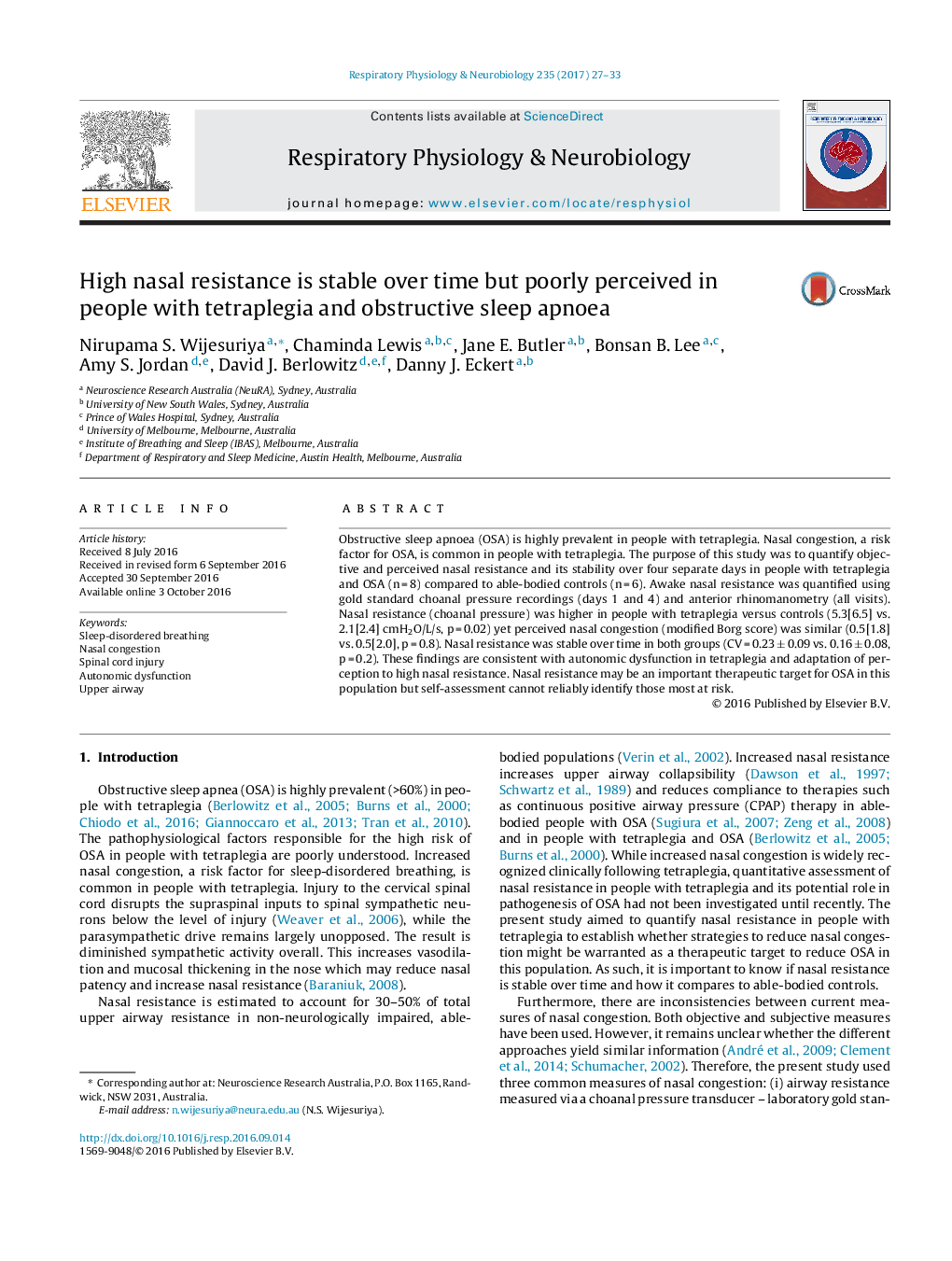| Article ID | Journal | Published Year | Pages | File Type |
|---|---|---|---|---|
| 5594226 | Respiratory Physiology & Neurobiology | 2017 | 7 Pages |
Abstract
Obstructive sleep apnoea (OSA) is highly prevalent in people with tetraplegia. Nasal congestion, a risk factor for OSA, is common in people with tetraplegia. The purpose of this study was to quantify objective and perceived nasal resistance and its stability over four separate days in people with tetraplegia and OSA (n = 8) compared to able-bodied controls (n = 6). Awake nasal resistance was quantified using gold standard choanal pressure recordings (days 1 and 4) and anterior rhinomanometry (all visits). Nasal resistance (choanal pressure) was higher in people with tetraplegia versus controls (5.3[6.5] vs. 2.1[2.4] cmH2O/L/s, p = 0.02) yet perceived nasal congestion (modified Borg score) was similar (0.5[1.8] vs. 0.5[2.0], p = 0.8). Nasal resistance was stable over time in both groups (CV = 0.23 ± 0.09 vs. 0.16 ± 0.08, p = 0.2). These findings are consistent with autonomic dysfunction in tetraplegia and adaptation of perception to high nasal resistance. Nasal resistance may be an important therapeutic target for OSA in this population but self-assessment cannot reliably identify those most at risk.
Keywords
Related Topics
Life Sciences
Biochemistry, Genetics and Molecular Biology
Physiology
Authors
Nirupama S. Wijesuriya, Chaminda Lewis, Jane E. Butler, Bonsan B. Lee, Amy S. Jordan, David J. Berlowitz, Danny J. Eckert,
